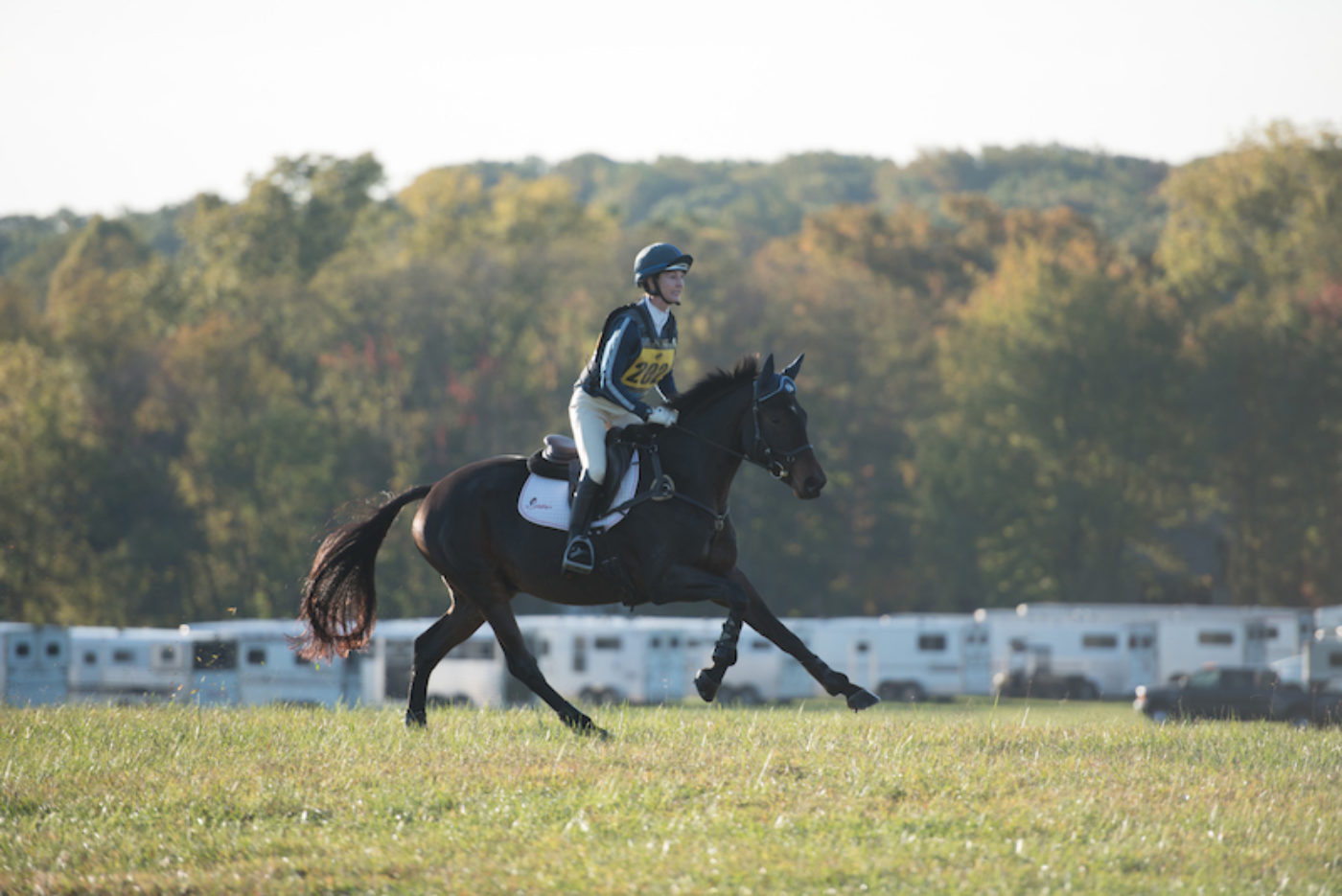Renew Your USEA Membership for the 2023 Season Today LEARN MORE

The Young and Future Event Horse article series is being provided through a partnership between Mythic Landing Enterprises, LLC. and the USEA.
For young horses just beginning their career, conditioning them for cross-country is very important. Madeline Backus explains that even at the Beginner Novice level, you want to have a fit horse to help ensure that it’s fun for them their first few times out. A tired and exhausted horse won’t come off cross-country begging to get back out there and do it again.
Most importantly, your horse should be able to confidently gallop across the field and over terrain. While they’re still learning about where their feet are, terrain can be a little challenging! As a rider, try to get them out of the ring as often as you can to make this challenge turn into more of a daily routine.
Even at the lower levels, interval training is essential for an event horse. As long as they’re in consistent work, horses starting their career at the Beginner Novice level will be plenty fit enough. Once they’re ready to move up to Novice or start contesting the 4-Year-Old Young Event Horse divisions, you’ll want to start incorporating more traditional conditioning sets.
“It’s important to remember that the heart is a muscle, and to strengthen it, we need to stress it and then relax it, and then stress it and relax it again. To accomplish this with my young horses, my conditioning day consists of three minutes of trot, two minutes of canter, another three minutes of trot and then a one-minute walk. I’ll repeat that pattern three times. Of course, if your horse needs more time to recover, walk for a little longer, or just do two sets that day,” Backus explains.
As your horse progresses and Training level or the 5-Year-Old Young Event Horse division is the next step, Backus will increase the sets to a five-minute trot, three-minute canter, five-minute trot with a one-minute walk in between, repeated three times. Doing these sets over hills and terrain is an added bonus as it allows your horse to stay aware of their balance.
Incorporating these intervals every seven to 10 days is ideal, but be sure to tailor how often you do them to your horses’ specific needs. For instance, a Thoroughbred may be just as fit completing these sets every 10 days, while a Warmblood moving up the levels may need to condition every five to seven days. Keep in mind that if you go cross-country schooling, or throw in an extra jump school one week to not overdo it with an added conditioning day.
Backus likes to monitor her young horse’s improvement by watching how quickly they cool down after their sets. Make sure that when you’re done your sets, your horse still has energy with their ears forward, looking happy. Ultimately your horse should cool off fairly quickly and easily after doing three full sets at their appropriate level.
Days off and hack days are also important to incorporate into your weekly schedule because it keeps them happy and ready to work. Hacking after rides in the ring is very beneficial as well, as it helps to build muscle. Listen to your horse and what they need in order to continue to be successful.
About Madeline Backus
Madeline Backus is an established event rider that has experience bringing up young horses from starter events to the upper levels. She recently completed her first Rolex Kentucky Three-Day Event with her mare, P.S. Arianna, who she brought up from Beginner Novice all the way through the four-star level. After spending two years as a working student for Jessica and Missy Ransehousen, Madeline stepped out on her own where she now trains out of Stud Equestrian Center in Colorado in the summer and Florida in the winter. To learn more about Madeline and her program, please visit her website.